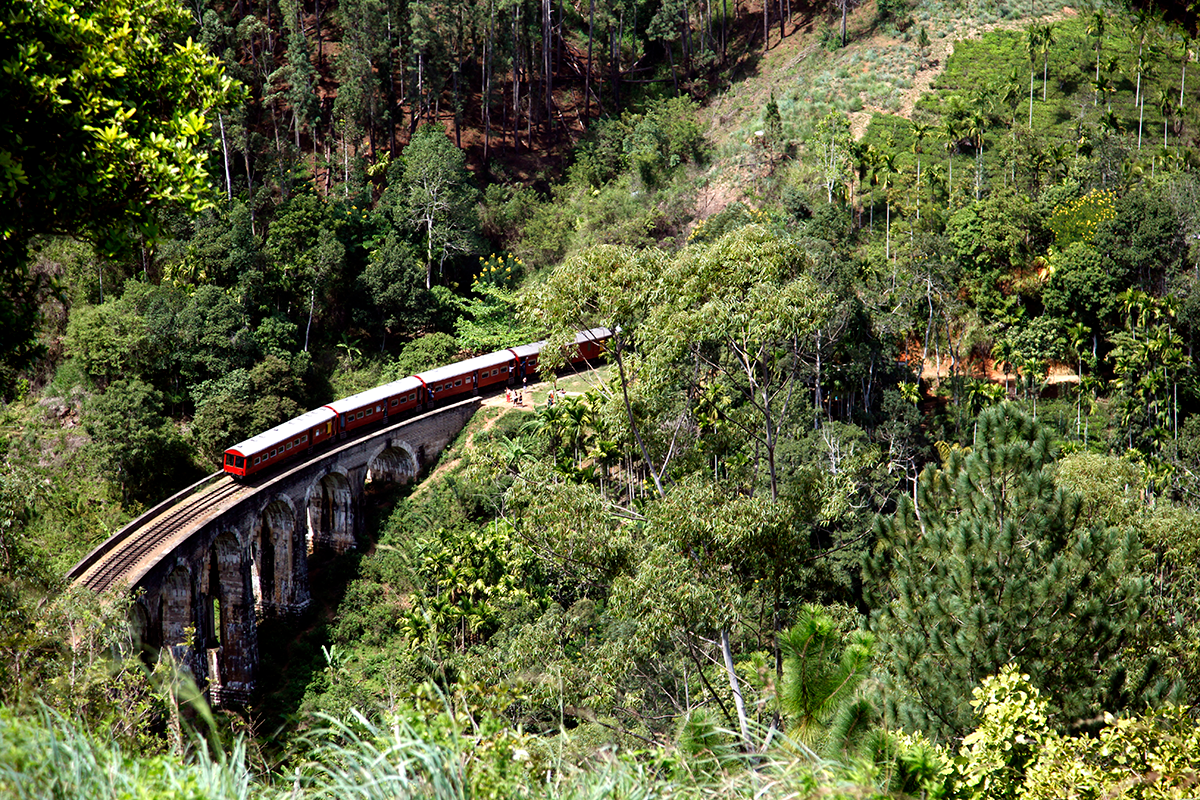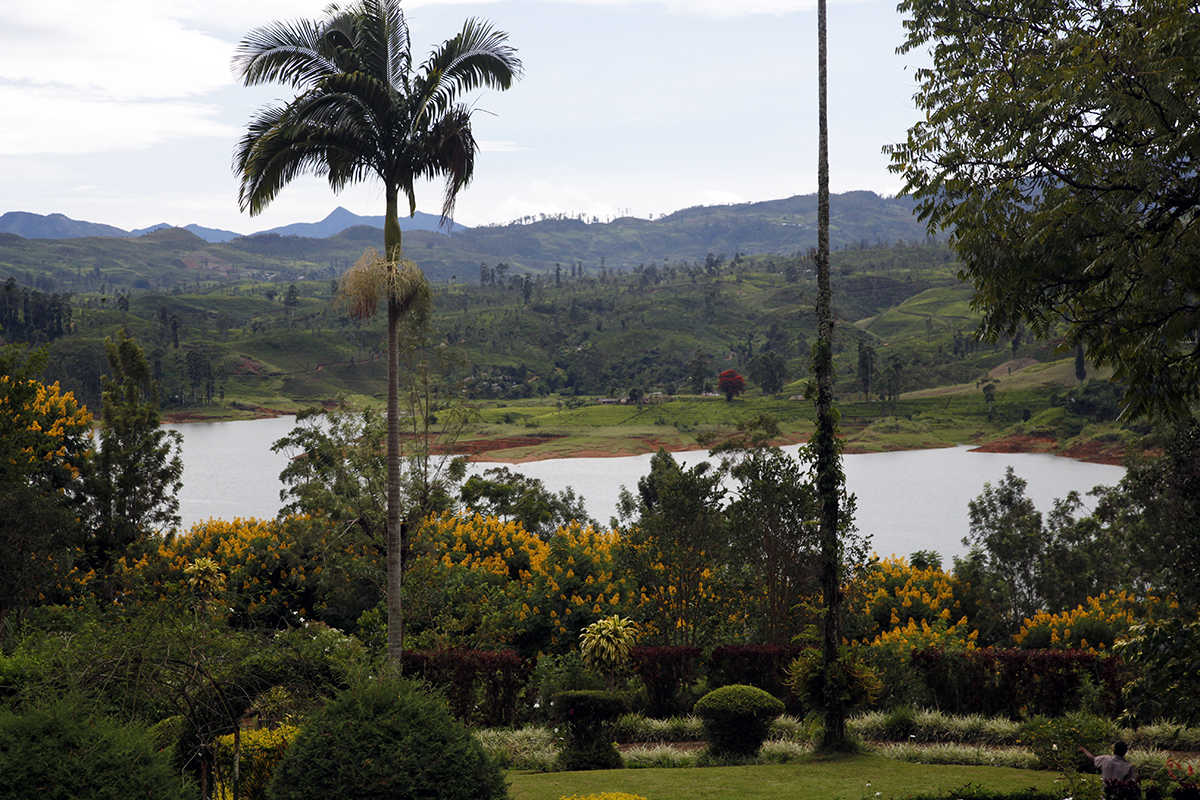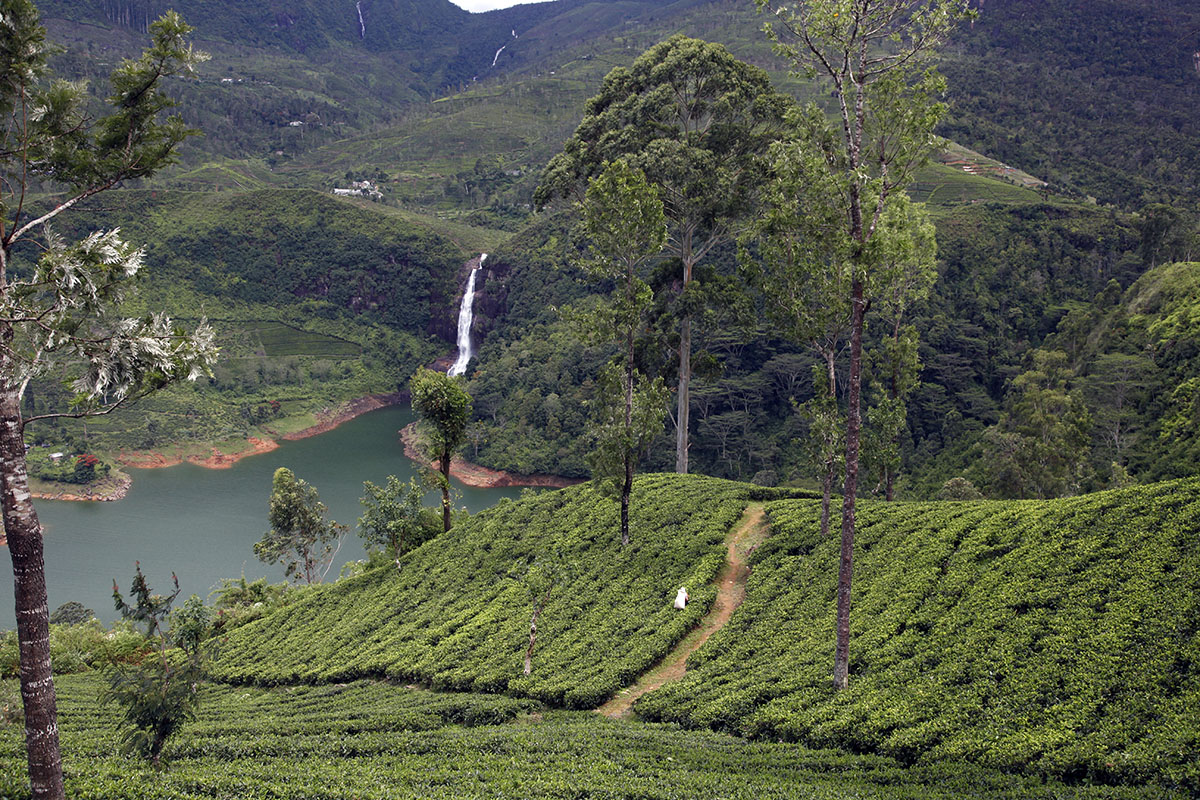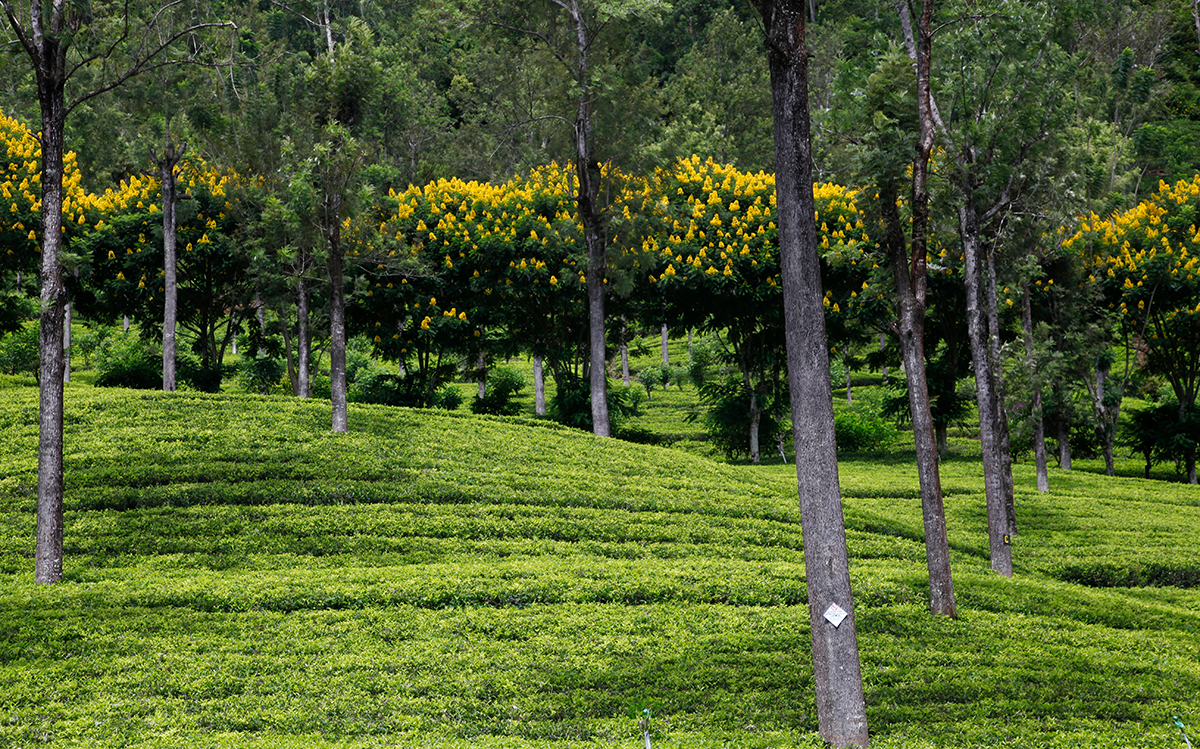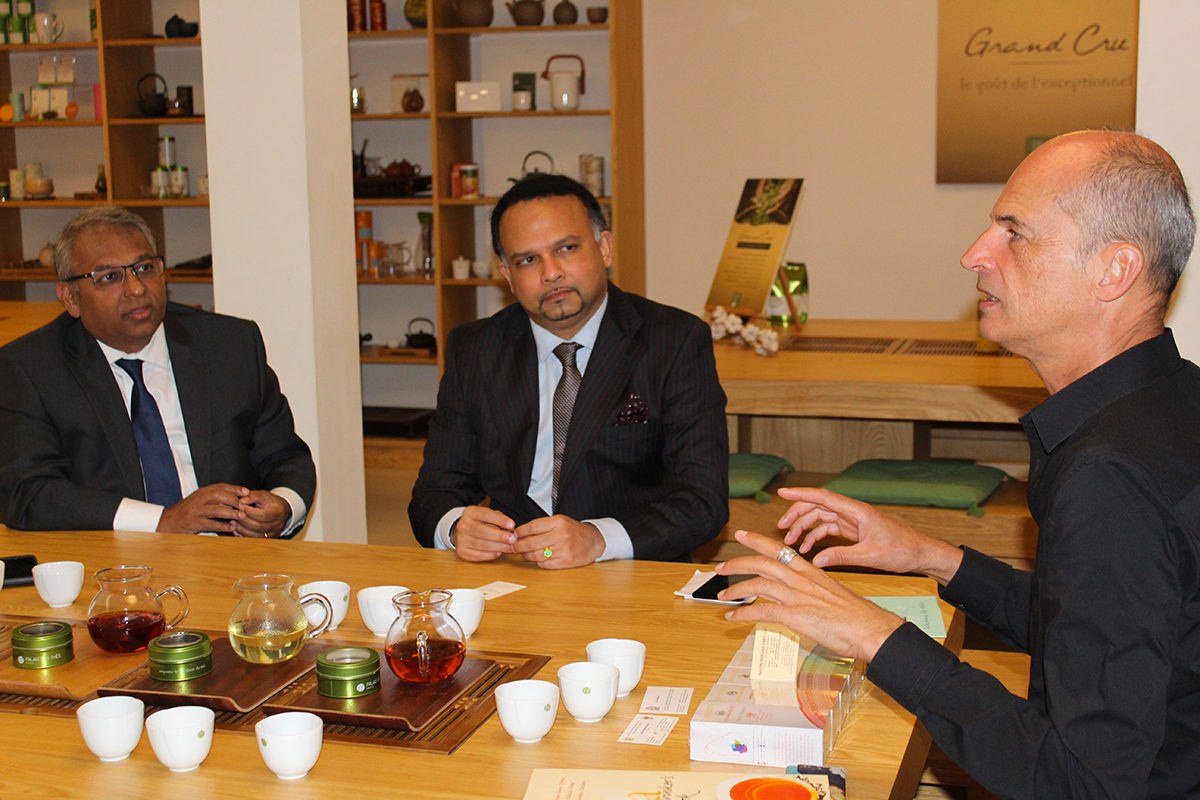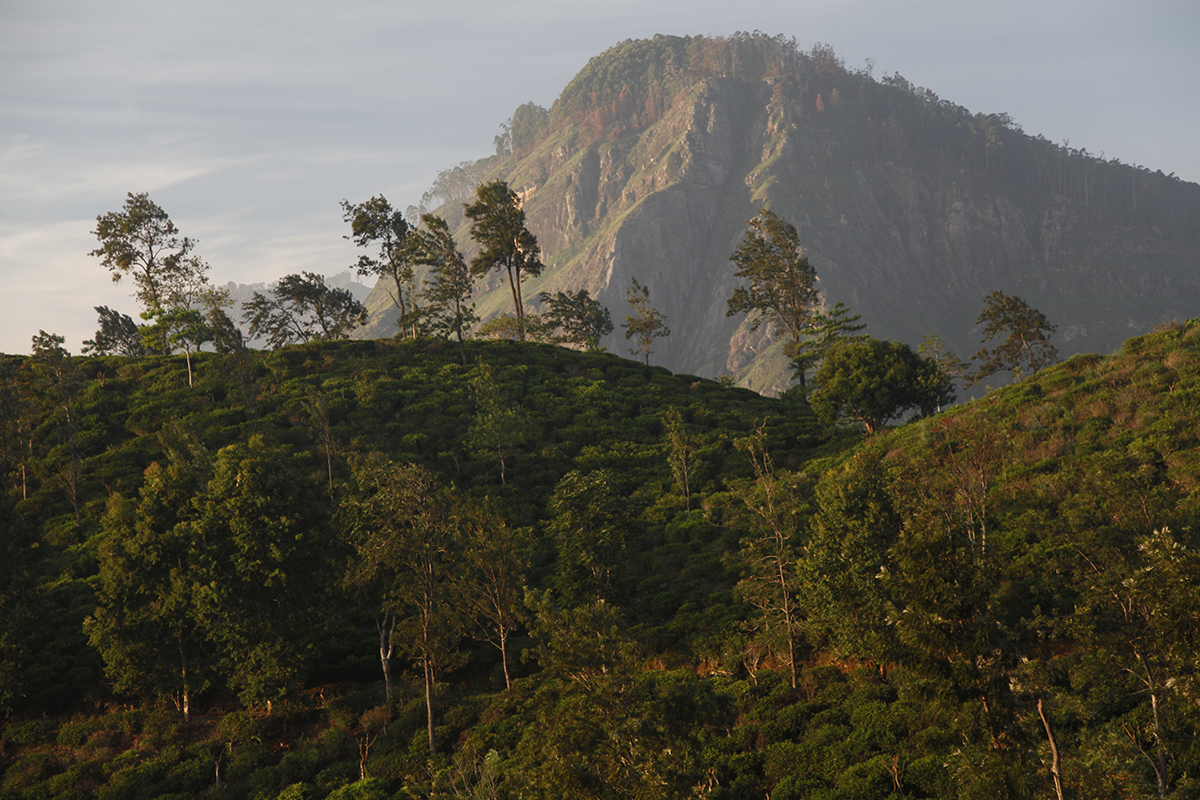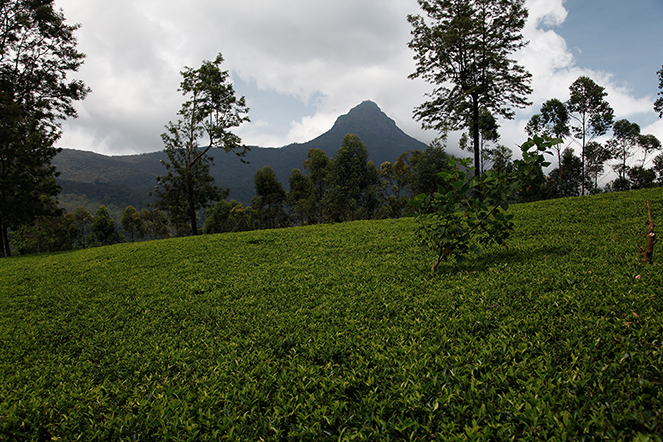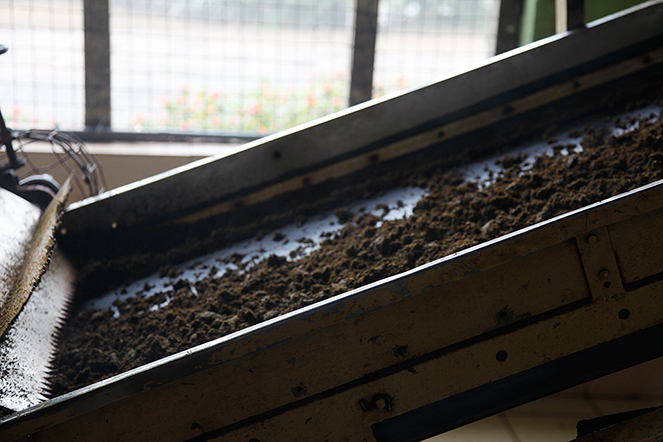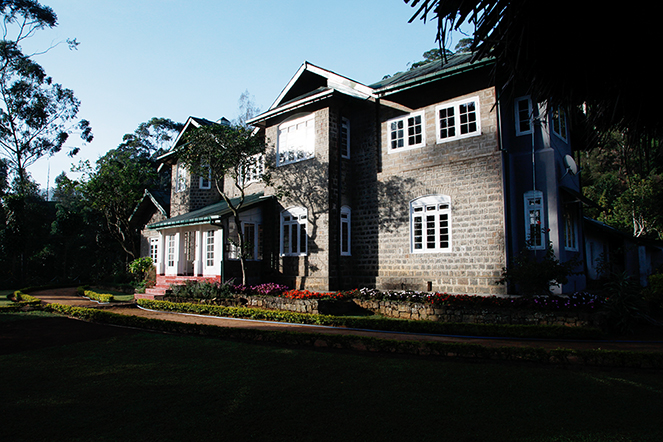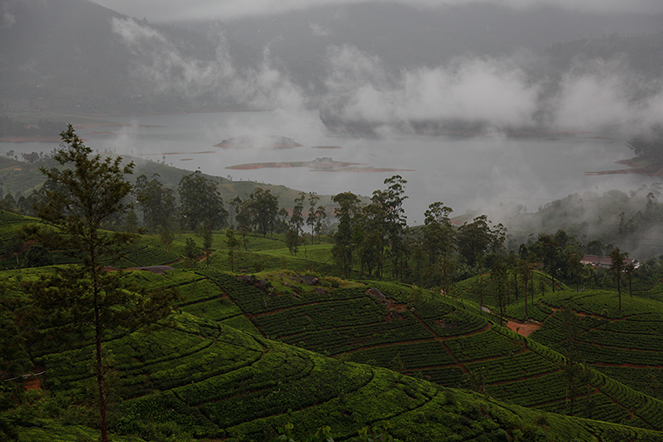Darjeeling isn’t the only place with a “toy train”. The one that links Colombo to Badulla often winds its way through tea fields during the ten-hour ride, and the views are appreciated by the tourists and many Sri Lankans who use the line. Unfortunately, the island is now experiencing severe economic and political turbulence. Let’s hope that this beautiful country, which has endured war for several decades, will move definitively towards better days, for the benefit of its inhabitants and many visitors.
Sri Lanka
Around Maskeliya Lake
Would you like to come for a walk with me around Maskeliya Lake in Sri Lanka? Here, we’re halfway between the high-grown and low-grown teas; between those from the mountains of the Nuwara Eliya region and the often-remarkable teas produced in the jungle around Sinharaja forest further south. This is the view from the front of the bungalow on the Moray Tea Estate. The artificial Maskeliya Lake is surrounded by tea plants and the magnificent flora particular to this region, including flamboyant cassia and poinsettia. The yellow and red brighten up the eternal green of our camellias.
A beautiful landscape does not always produce good tea
Sri Lanka’s tea plantations are among the most beautiful in the world, but that is not always reflected in the quality. You have to learn not to be influenced by landscapes. The best teas on the island are in the south, in a less mountainous region. Here, west of Nuwara Eliya, you won’t enjoy a remarkable tea, but the views are magnificent.
A bit of shade
When it gets really hot, tea plants benefit from a few hours of shade every day. So in regions where temperature can soar, trees are planted above them.
We are like the tea plants – dreaming, as we walk around town, of leafy trees that would shade us from the sun and excessive heat.
Encouraging growers to produce the best teas in the best conditions
Sri Lanka is a magnificent country, now at peace. The landscapes are stunning, with tea plants as far as the eye can see. The country’s best teas are produced in the south, near the remarkable Sinharaja forest – these are the low growns. Further north, the teas are manufactured more industrially, a legacy from the colonial days. On these high northern plateaus, producers could make better teas if they stopped using machines called rotorvanes, which maul the leaves to accelerate the oxidation process. It would also be better, in this region where the climate and scenery remind Scottish visitors of their own country, to come across more people who own their land and make their own tea, rather than employees – often women – working in less than ideal conditions. A fair system works very well for the low growns (for example at New Vithanakande, the most famous garden in that region).
During the visit to France by Navin Dissanayake, Sri Lanka’s minister for the tea industry, accompanied by Buddhi K. Athauda, the Sri Lankan ambassador to France, we enjoyed an informal tasting and friendly discussion at their request to help them understand how to make what used to be known as Ceylon teas – Sri Lankan teas – better known in France.
Little Adam’s Peak
I was incredibly fortunate, when I woke yesterday without knowing exactly where I was, to discover this sublime view from my bed. I’d arrived in Ella late the night before, from Ratnapura, and without the moon I couldn’t get a sense of the landscape. I was woken at 5am by the birds singing, as well as the shrill cries of the squirrels, who were celebrating daybreak in their own way. I went out onto the terrace to enjoy the sight, and I stayed there, taking it all in. This mountain is called Little Adam’s Peak.
I hadn’t been to this beautiful country for a year, and I’m happy to see that in the mountains in the centre of the island, a few factories that used to make teas industrially with a rotorvane machine, which is very rough on the leaves, are now at least trying to make teas the orthodox way, a method that is more respectful of the leaves. They are just attempts, I know, but it’s a promising sign and it’s a pleasure to see that tea planters want to try out new methods, make better teas; that they are curious, and want to improve their quality.
Adam’s Peak
Many Sri Lankans have climbed the slopes of Adam’s Peak at least once in their lifetime.
It is a place of pilgrimage for Buddhists, who worship Buddha’s footprint at the summit, but also for Hindus, Muslims and Christians. The ascent begins with a walk through a tea field, which you cross on your way to the top.
A terrible machine for tea
It is difficult to find good tea in Sri Lanka, and here is a photo of the guilty party. Known as a rotorvane, it puts the leaves under enormous pressure and can roll three times the quantity of freshly withered leaves as a traditional roller. The oxidation time can then be reduced to a few minutes because the leaves have been squashed so much.
This procedure is widely used in the mountains in the centre of the country. It has the advantage of increasing yield, but what is the point when you gain strength in lieu of any subtlety of flavour and aroma.
A magnificent bungalow
The British had an instinct for comfort. They built magnificent bungalows during the colonial era. These buildings still exist today, surrounded by tea fields, like here in Gorthie (Sri Lanka). I was lucky to stay there recently. It was all very refined: they serve delicious food, and with the first light of dawn you are seduced by the beauty of the garden.

